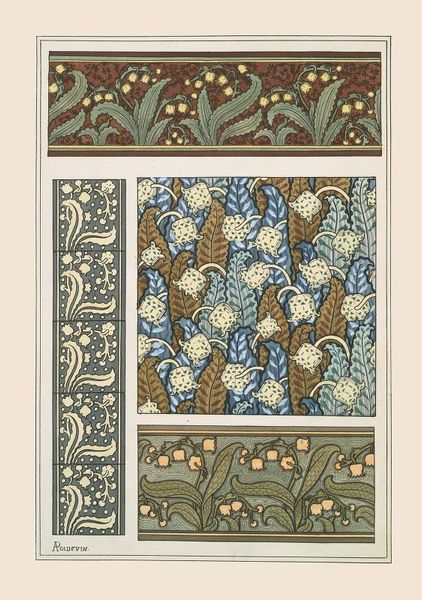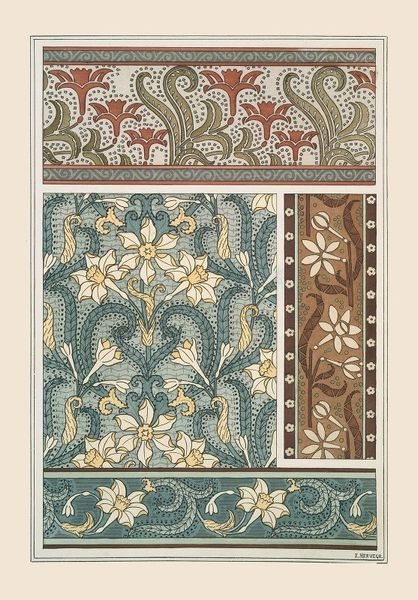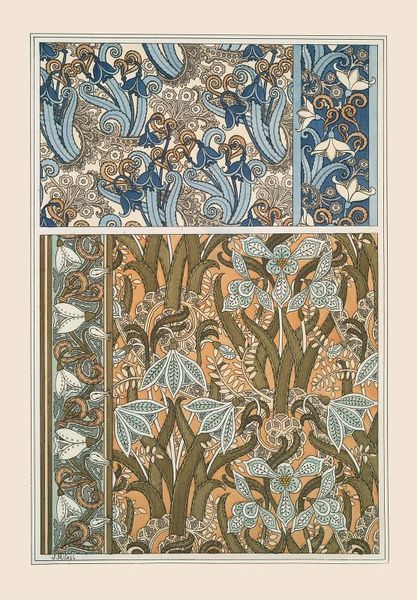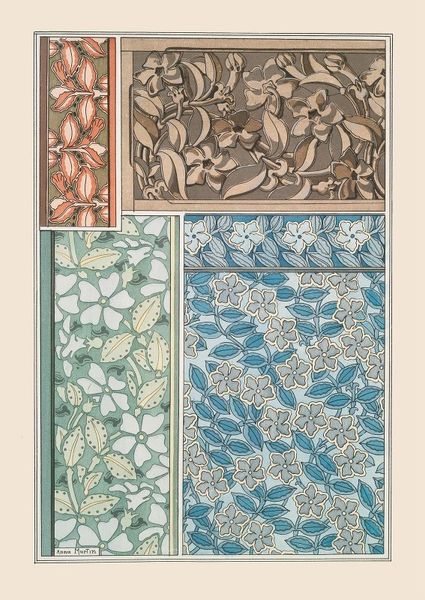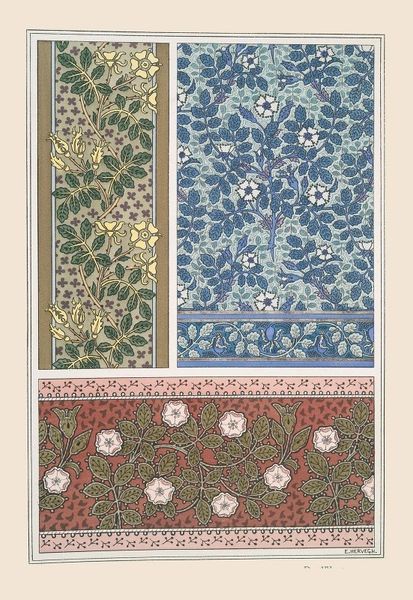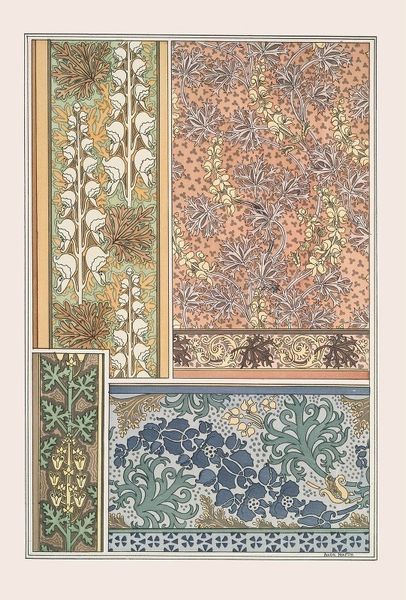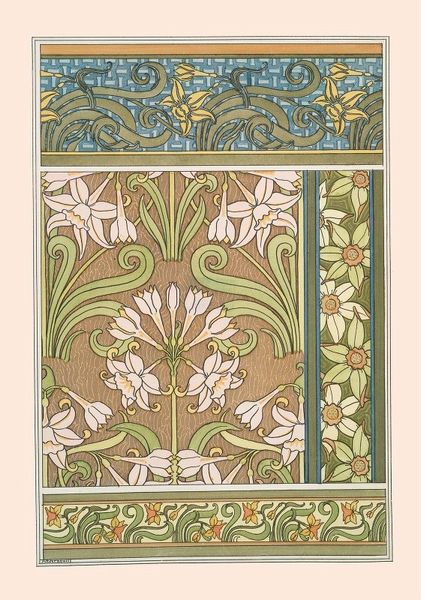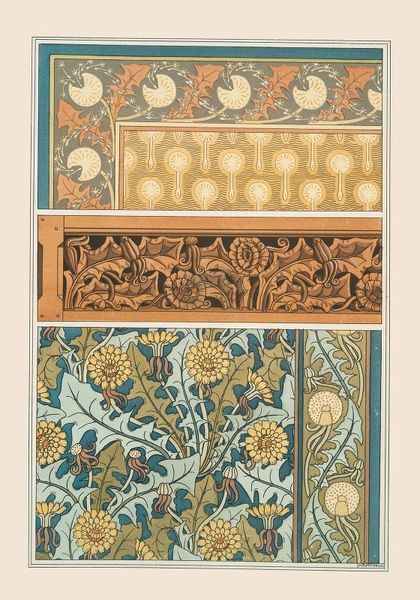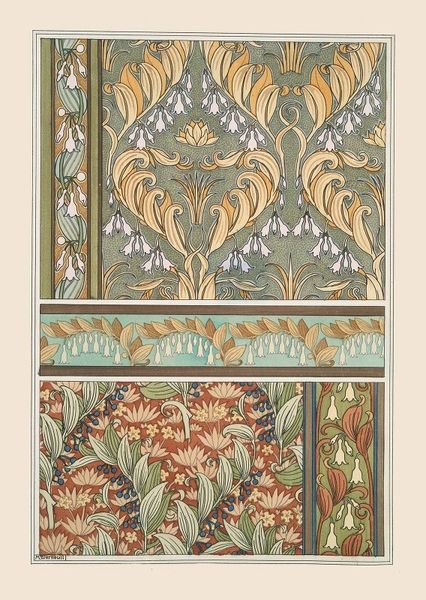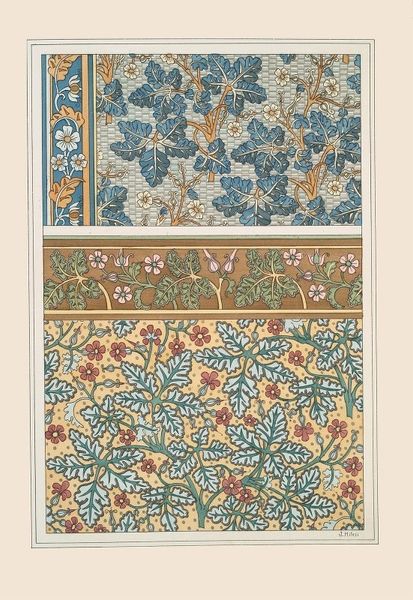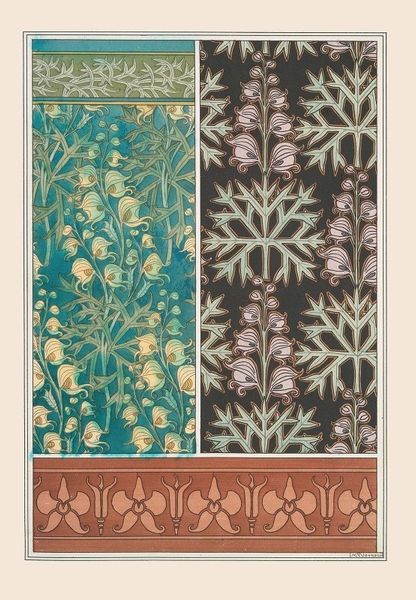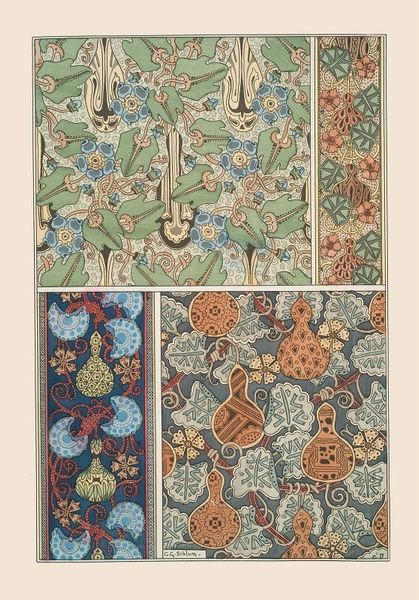
drawing, paper
#
drawing
#
naturalistic pattern
#
organic
#
art-nouveau
#
paper
#
geometric pattern
#
pattern background
#
pattern design
#
ethnic pattern
#
repetition of pattern
#
vertical pattern
#
pattern repetition
#
textile design
#
decorative-art
#
layered pattern
Copyright: Public Domain: Artvee
Curator: This is Maurice Pillard Verneuil's "Muguet 2", created in 1896. The drawing showcases his mastery of Art Nouveau textile design. Editor: The first impression is one of delicate repetition and a structured celebration of the natural world. I notice the controlled palette—restrained greens, whites, and blues. There's something both soothing and intensely ordered about it. Curator: Verneuil, along with other Art Nouveau artists, believed in blurring the lines between fine art and applied arts. Textile design was not considered inferior but a medium for expressing aesthetic and often socio-political ideals, particularly around democratizing art. Editor: Precisely. And the choice of subject—lily of the valley, or muguet—is telling. It's a flower often associated with good luck and the arrival of spring. In late 19th-century France, could this imagery offer a subtle critique, or perhaps a comforting escape, amid industrial upheaval and social change? Curator: Certainly. Mass production transformed society and this return to organic forms, however stylized, signified something important. Verneuil also taught design, so this drawing acted almost like a manifesto, a call for mindful integration of nature and industry. His aesthetic promoted more widespread engagement with art through everyday life. Editor: The layered patterning definitely evokes that. Look how each section uses distinct arrangements. They are variations on the floral theme; it makes me consider how Verneuil understood repetition as a core principle, a sort of aesthetic mirroring of industrialized methods, while simultaneously critiquing them through this return to the natural world. Curator: It speaks to the complexities of that period. The push and pull between progress and preservation. He navigated that space creatively. And though overtly decorative, this piece invites us to reconsider how we interact with and perceive artwork and its role within the structures of industry and politics. Editor: Ultimately, engaging with "Muguet 2" reminds me that even the most ornamental objects can carry profound statements, challenging us to find meaning where beauty meets production and the power structures that drive them.
Comments
No comments
Be the first to comment and join the conversation on the ultimate creative platform.
